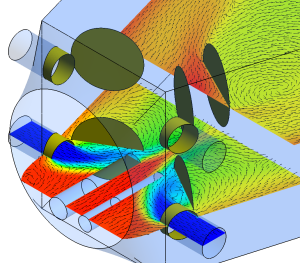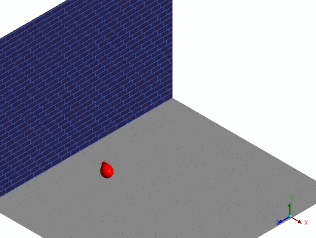Thermal & Species Mixing
Temperature distribution is very important when temperature sensitive components are used. Material strength, creep rupture, exfoliation of catalyst surface, slagging are all affected greatly by high temperatures. To protect these components from costly repairs and outages, or in order to use more economical material alternatives often times temperings systems are introduced. Great examples are coal pulverizers and gas turbine SCR systems. To prevent a possible fire hazard inside the pulverizer hot air (550F) is mixed with ambient air before entering into the pulverizer as the transport medium. A similar use is common in gas turbine SCR systems. CO and NOx catalyst surfaces are designed for temperatures (typically around 800F) which are much lower than the gas turbine exhaust gas temperature (>1000F). Proper functioning of the system is very dependent on temperature uniformity after cooler air is introduced. Any hot spots on the catalyst surface will reduce its life and performance.

Tempering Air Mixing with Hot Gas
Similar to thermal mixing, species mixing is also very important for systems proper functioning. Uniform distribution of reactants in the stream is crucial for reaction efficiency. Ammonia injection in an SCR or SNCR system is a great example. Higher NOx reduction is only achieved by good mixing of ammonia and flue gas. Another example is flue gas recirculation (FGR) system where some portion of the flue gas is reintroduced into the furnace to improve the performance and also to reduce the emissions. Harmful gas mixing into the air is also a species mixing/dispersion example.

Gas Dispersion into the Atmosphere with Wind
Thermal and species mixing can be achieved by optimum arrangement of turning/ladder vanes, mixers or perforated plates. These flow devices can be easily implemented by CFD and compared with the base design.